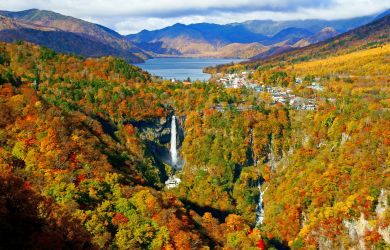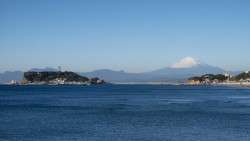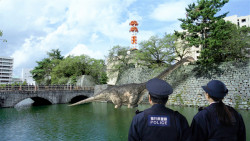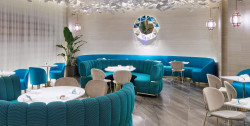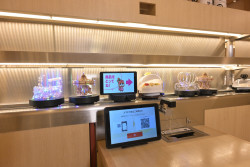
December 18, 2008
Last call for Kabukicho
As the iconic Koma Theater goes under the wrecking ball, is this the end of Tokyo’s notorious red-light district?
By Metropolis
Originally published on metropolis.co.jp on December 2008

Illustration by Phil Couzens
The framed certificate in Yoshihisa Shimoda’s office acknowledges his successful completion of a training program on thwarting the activities of boryokudan, or criminal organizations. Such an accreditation from the Tokyo public safety commissioner should be extremely practical given his task at hand.
Shimoda is the office manager of Kabukicho Renaissance, an organization whose goals are to rehabilitate the image of Japan’s largest red-light district, located just northeast of Shinjuku station.
“At the end of the day, we want Kabukicho to be clean,” says Shimoda, who along with two other staff members began operations in April. “We want security, safety and a pleasant environment.”
For years, it was well-known that the bread and butter of a typical yakuza gangster working the darkened streets of Kabukicho has been the sale of ordinary items like hand towels and ice cubes at heavily marked-up prices to the area’s seedy bars and kyabakura (cabaret clubs) in exchange for “protections.” The establishment of Kabukicho Renaissance coincides with a police crackdown on sleaze that has shut a large swath of fuzoku (sex-related) businesses. In place of debauchery, Shimoda’s organization is promoting festivals, concerts, nighttime illuminations and patrols that perform building inspections to counter boryokudan activities.
Perhaps assisting his cause will be this month’s closing of the Shinjuku Koma Theater, Kabukicho’s symbolic center. Should a sparkling office tower rise in its place, as many believe, the cleanup of the area could accelerate, sending many of the neighborhood’s regulars scurrying for new turf.

Photo by Sarah Noorbakhsh
The 2,000-seat Koma, which opened in 1956 as a venue for kabuki and enka shows, welcomed 1 million visitors annually during its heyday. Its demise comes after film giant Toho made the company that owns the theater, Koma Stadium, a wholly owned subsidiary. In the basement of the Koma building is a Toho film theater that will also close in the coming weeks (see below).
Toho intends to redevelop the site together with the rundown building it owns next door. A company spokesman would not comment on its plans for the property, only saying that Toho was still in the process of dealing with lease contracts for the various other tenants.
However, in a column that appeared in the August 27 issue of Newsweek Japan, restaurateur, author and Kabukicho guide Xiaomu Lee proposed that a “Kabukicho Hills” complex be built. But unlike the Mori Building towers that have cropped up in ritzy areas of Tokyo, Lee suggests the Kabukicho version stay close to the area’s roots and include hostess bars and sex clubs.
Such a development would clash with the recent introduction of conventional businesses and facilities that have begun to galvanize Kabukicho, which was named after a kabuki theater in the late ’40s that was planned but never built.

Photo by Kohji Shiiki
Earlier this year, American hotel company Best Western established a franchise near the Shinjuku Ward office, and Japanese chain Hotel Villa Fontaine opened an inn near Shokuan Dori. Also this year, Osaka-based talent agency Yoshimoto Kogyo moved its Tokyo branch to a former school building, one room of which houses the Kabukicho Renaissance office.
Brochures from Kabukicho Renaissance promote the newly brick-lined sidewalks and sparkling parking barricades on Hanamichi Dori, which splits Kabukicho in half and fronts one side of a neighborhood cornerstone, the Furin Kaikan. That building’s Parisienne coffee shop, a well-known gangster meeting place, converted half of its floor space into a pharmacy following a bloody shootout that led to one death and three arrests in 2002.
Other moves included the razing of an entire block of shops peddling adult DVDs earlier this year; the site is now a parking lot. Raids on similar establishments last month netted 17 arrests for the sale of films that were not properly censored.

Photo by Brett Bull
The host club industry has been a continual target of regulation due to aggressive street-soliciting and cases of girls being gouged for bills that ran to hundreds of thousands of yen. To show that they operate within the bounds of the law and are not at the mercy of the mob, numerous clubs banded together in 2006 to found the Shinjuku Kabukicho Host Club Anti-Organized Crime Association.
Observers have noted that the shift began with the installation of video cameras soon after a fire tore through a neighborhood mahjong parlor in 2001, killing 44 people. Yet the harshest blow has certainly been stricter enforcement of the Law Regulating Adult Entertainment Businesses, which was enacted in 1948 and requires all venues providing entertainment—of any kind—to begin removing customers at midnight and shut down at 1am. Dance halls, hostess bars and sex clubs throughout Tokyo have come under increased pressure.
Complicating matters was a 2006 amendment to the law that requires fuller disclosure on lease and registration documents for shops applying to offer “sexual services.” And more than one piece of legislation introduced over the last two years has restricted hosts from “catching” potential female clients in the street.
Closing its cabin a few months ago was kyabakura Sky Heart, in which ladies outfitted in stewardess uniforms were open for molestation by customers. A “new half” cabaret, in which the staff are women who were once men, has received numerous visits from law enforcement. A mama-san going by the name Akita says that the club’s floor shows, which are fully nude and showcase mind-bogglingly amazing surgery, have been reduced from roughly four to two per evening due to the crackdown. “Once they catch you going past 1am, they come back again,” she says of the police presence. “It’s like baseball. One, two, three strikes and you are out.”

Photo by Brett Bull
Insiders interviewed for this article almost unanimously believe that the motive behind a wholesome Kabukicho is the doing of Tokyo Governor Shintaro Ishihara, who is making a push for the metropolis to host the 2016 Olympics.
Location, too, is a key. With the newly opened Fukutoshin line rolling past to the east and the Yamanote line bordering on the west, Kabukicho is well situated for an influx of legitimate businesses. “Right now, Osaki and Odaiba have many office buildings,” says Masaru Jo, director of the Kabukicho Shopping Center Promotion Association, whose fifth-floor office is around the corner from the Koma complex. “But they are not convenient. There is a high demand for the Koma space as an office.” Jo predicts that, given current building laws, a structure between nine and 15 floors could rise on the site.
A report compiled by Jo’s association indicates that, each day, 250,000 people shuttle past Kabukicho’s approximately 3,500 pleasure shops, many of which are not prepared to let the demise of the Koma be the domino that quickens the cleanup movement.
Since bars and restaurants that exist exclusively for drinking and eating are exempt from the 1am law, dozens of “girl’s bars” have appeared. These are basically rearranged hostess clubs in which fashionably dressed ladies tend bar opposite the seated customer, with the crucial difference being that the pair are not elbow-to-elbow—as would be seen as “entertainment,” at least in the minds of the police.

Photo by Brett Bull
The National Police Agency, however, understands the true nature of the bars. “We consider them to be of the same category,” said an NPA official in an interview in October. “We are not distinguishing them from other adult businesses.” To show that the authorities are indeed monitoring the situation, a 24-year-old female employee at girl’s bar Double was arrested for sitting next a male patron on a sofa just before 2am on a Saturday morning in October.
Host club magnate Takeshi Aida, who founded his first venue in Kabukicho in 1972, last year established his second onabe bar, where the staff are dressed as men. Attired in sharp white shirts and dark vests, the girls at Marilyn 2 serve drinks into the wee hours of the morning from behind a curving counter bathed in blue LEDs.
Hiroharu Kimura, chairman of sex-trade publishers Creators Company Connection, believes that Kabukicho in its old form is dead. “Right now, I think it is a great time for everyone to reflect on how we view the issue,” he explains in his office just north of Kabukicho. “The law has been in place for such a long time but enforcement has become lax. It’s like traffic laws—if the maximum speed is 40kph, people will drive 50kph.”
Free entertainment guide Poke Para (“Pocket Paradise”) is one of Creators’ numerous titles catering to sexual services industries. Yet it is Deri Heru Manzoku, which offers ads for girls who can be ordered by phone or internet to meet at a designated location, that Kimura believes represents the future. “The shift will be to the internet,” Kimura says, adding that brick and mortar shops are not practical in the current enforcement climate. “The guide is portable and the information is accessible by a mobile phone.”
And what if fuzoku operations are shuttered entirely? “They will scatter all around the city,” he says. “I find it troubling that the general public will stumble across these places.” Kimura cites the Taito-ku neighborhood of Yoshiwara as an example of a red light district that’s easily controlled because it’s confined to a limited area.
Meanwhile, Kabukicho maintains its familiar pulse. Hosts sporting their trademark frilly hairdos and toting copies of Poke Para, open to the page where their club’s ad is located, still patrol the streets around Hanamichi Dori. Even on a typical weekday at 10am, a line snakes down the stairs leading to strip club T.S. Music, which all day features shows of ladies disrobing from schoolgirl and nurse uniforms for ¥5,000.
Nor have the boryokudan left the area entirely. Renaissance’s Shimoda guarantees that gangster offices are still scattered around Kabukicho, and at any of the festivals at nearby Hanazono Shrine, where many people come to pray for prosperous business ventures, visitors with pinkies trimmed at the first joint are not an unusual a sight.
Retail association director Jo believes that regardless of what the future holds—glistening office tower or otherwise—Tokyo’s legendary red light district will retain some of its character; after all, that is why people come. “The attraction remains the same,” he says. “People come to Kabukicho because it is Kabukicho.”

